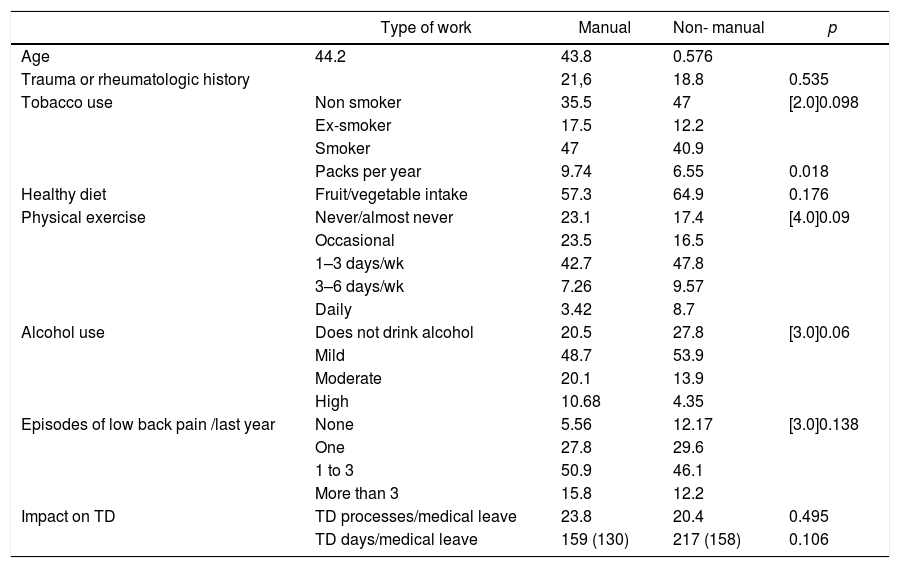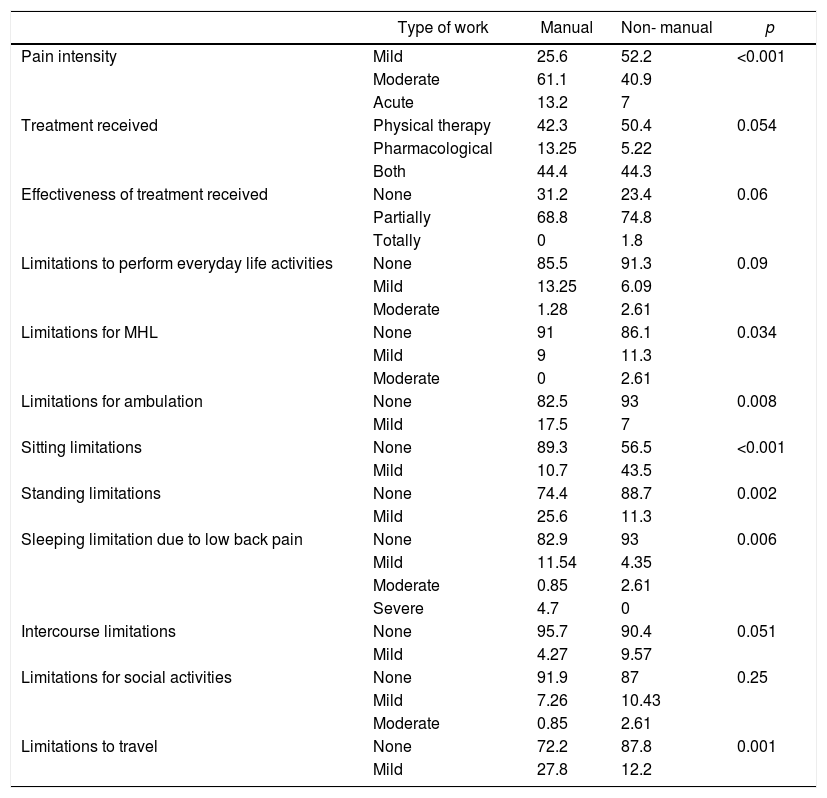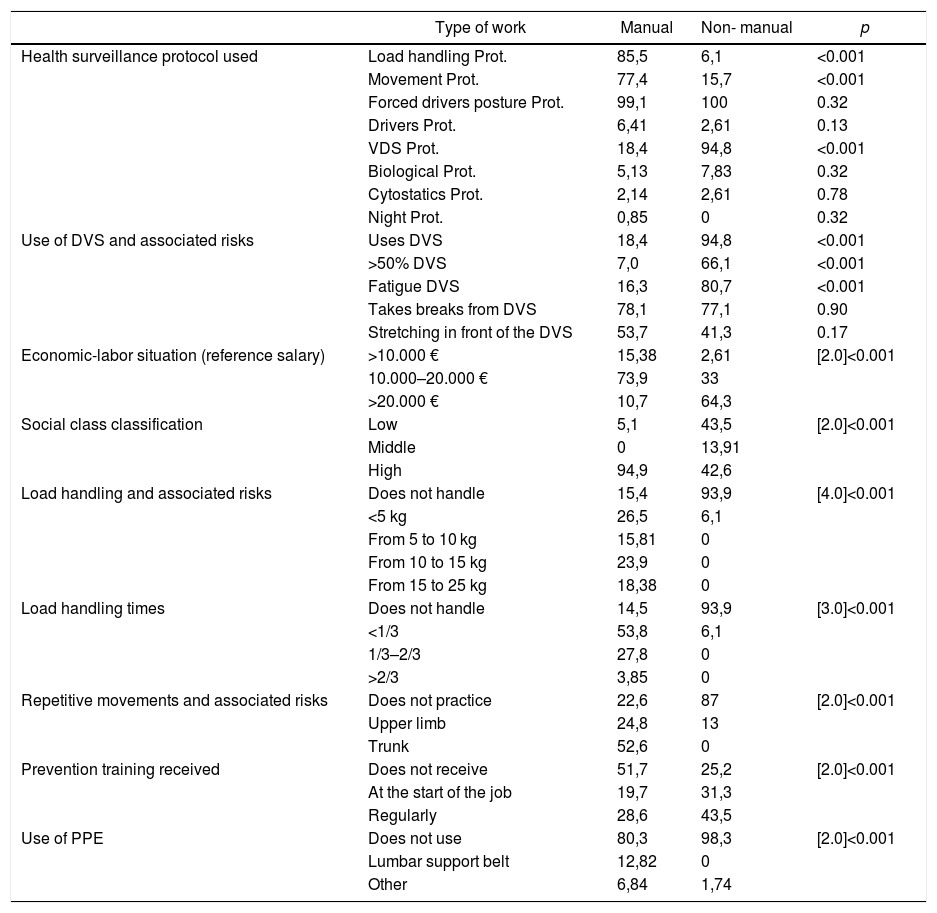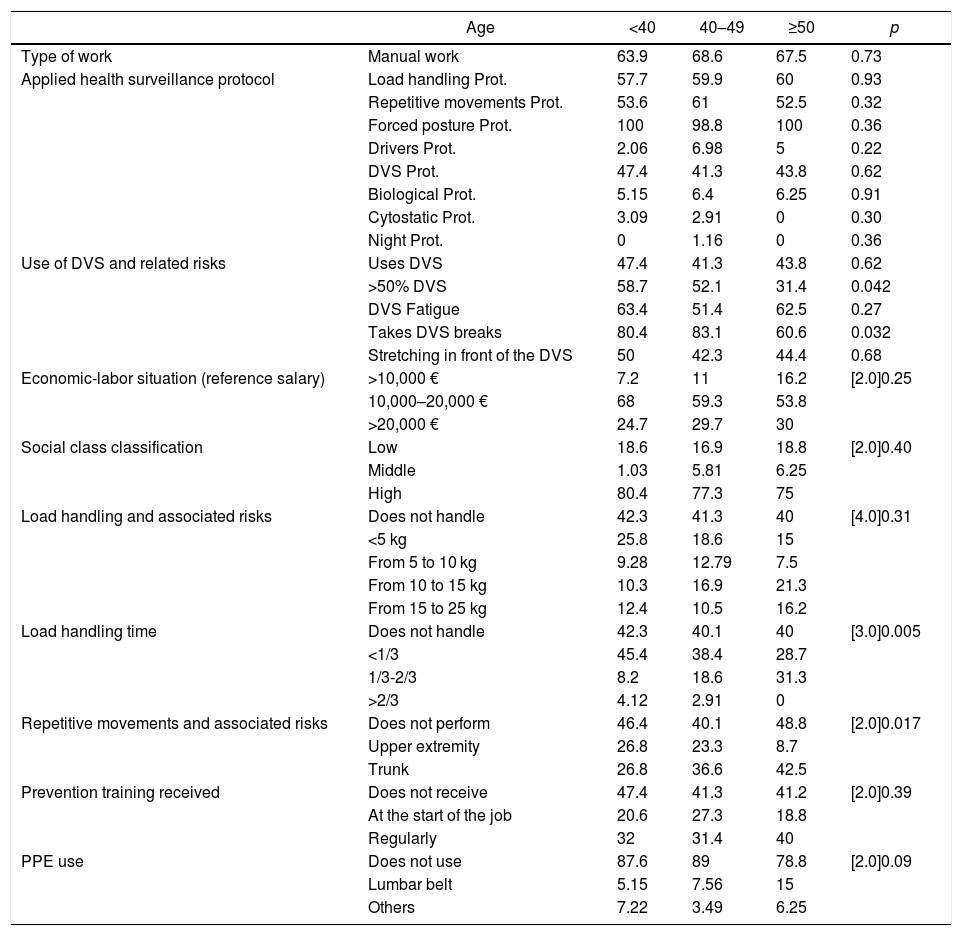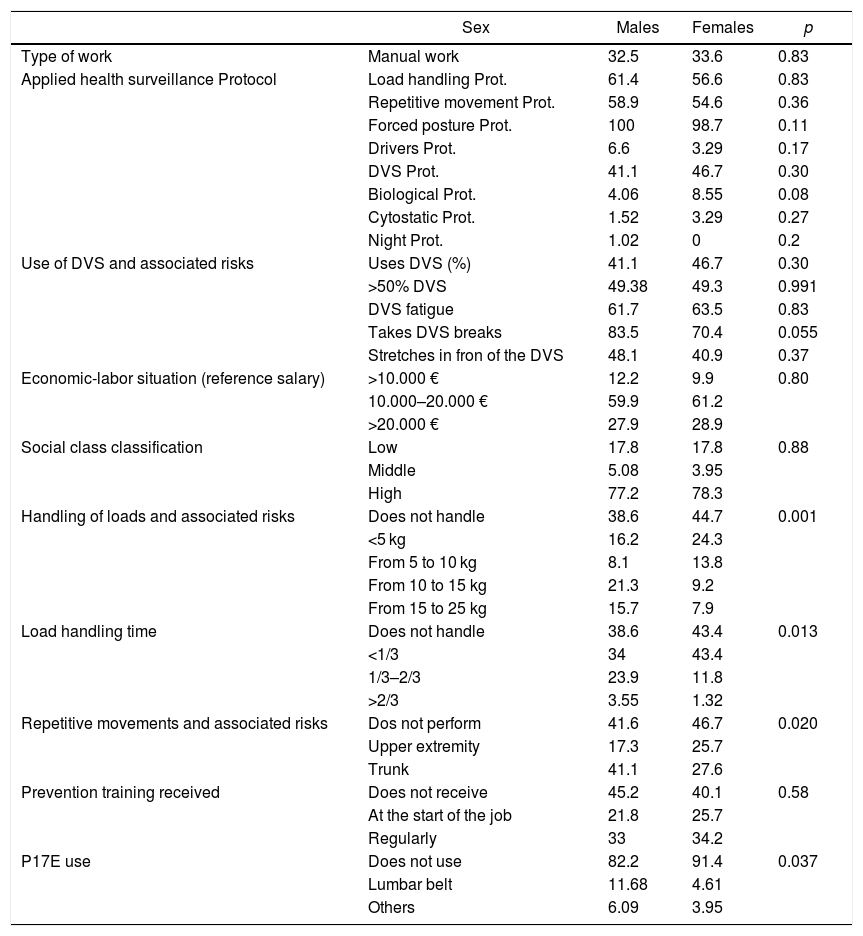Low back pain is a prevalent condition with health, social and occupational impact. The aim of this study is to assess the influence of social and occupational factors on worker patients with low back pain.
MethodA descriptive study was conducted on 349 subjects with low back pain. The main independent variable was being a manual or non-manual worker. Other social-occupational and lifestyle variables were also considered. The level of disability was established according to the Oswestry low back pain disability questionnaire, and the association between the type of job and the test was evaluated using multiple linear regressions.
ResultsManual workers are heavier smokers (47%), experience more pain (74.3%), have a lower economic status (89.3%), use more drugs (57.7%), have limitations in walking (17.5%) and standing (25.6%), used carrying protocols (85.5%), make repetitive movements (77.4%). They made trunk (52.6%) and upper limb movements (24.8%), and received less prevention training (51.7%), but used low back protection (19.6%).
The non-manual workers had greater limitation in handling loads (37.4%) and sitting (43.5%), and computer screen user protocols were applied (94.8%), and had a lower social class classification (57.1 low-middle class).
Performing manual tasks at work is significantly associated with an increase of 2 points in the Oswestry test compared to non-manual workers, when adjusted for age and gender (coefficient β: 2, 95% CI: 0.6–3.36).
ConclusionLow back pain is a prevalent condition, with an unfavorable prognosis that has an individual, social, and occupational impact. Performing manual tasks is associated with an increase in the disability scale, regardless of age and gender.
El dolor lumbar es una dolencia prevalente con repercusión sanitaria, social y laboral. Es objetivo de este trabajo valorar la influencia de las variables sociolaborales en pacientes con lumbalgia que trabajan.
MétodoEstudio descriptivo en 349 sujetos con lumbalgia. Es variable independiente principal ser trabajador manual y no manual; también son recogidas otras variables sociolaborales y de estilo de vida. La incapacidad se obtuvo mediante la escala del cuestionario de Oswestry y la asociación entre el tipo de tarea y el test se evaluó con regresión lineal múltiple.
ResultadosLos trabajadores manuales consumen más tabaco (47%), tienen más dolor (74.3%), peor situación económica (89.3%), consumen más fármacos (57.7%), tienen limitación en deambulación (17.5%) y bipedestación (25.6%), se les aplican protocolos de cargas (85.5%) y movimientos repetidos (77.4%), realizan movimientos de tronco (52.6%) y miembros superiores (24.8%) y reciben menor formación preventiva (51.7%), pero utilizan protección lumbar (19.6%).
Los trabajadores no manuales tienen mayor limitación en cargas (37.4%) y sedestación (43.5%) se les aplican protocolos de usuarios de pantallas (94.8%) y tienen peor tipificación en clase social (57,1 clase media-baja).
Realizar tareas manuales en el trabajo se asocia significativamente con un aumento de 2 puntos en el test de Oswestry respecto a los no manuales, ajustado por edad y género (coeficiente β: 2, IC 95%: 0,65–3,36).
ConclusiónLa lumbalgia es una dolencia prevalente, de curso desfavorable, que implica impacto individual, social y laboral. Realizar tareas manuales se asocia con un aumento en la escala de incapacidad, independientemente de la edad y el género.







